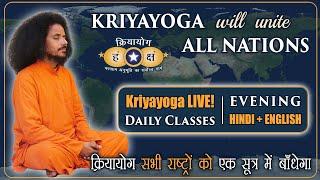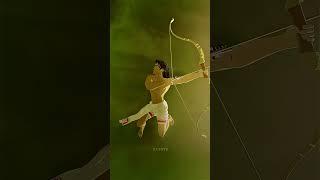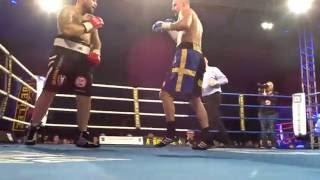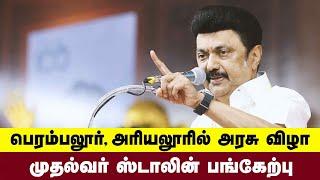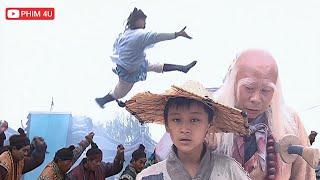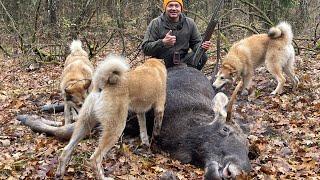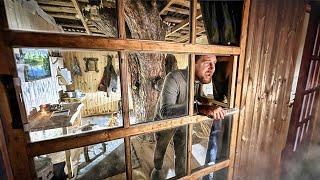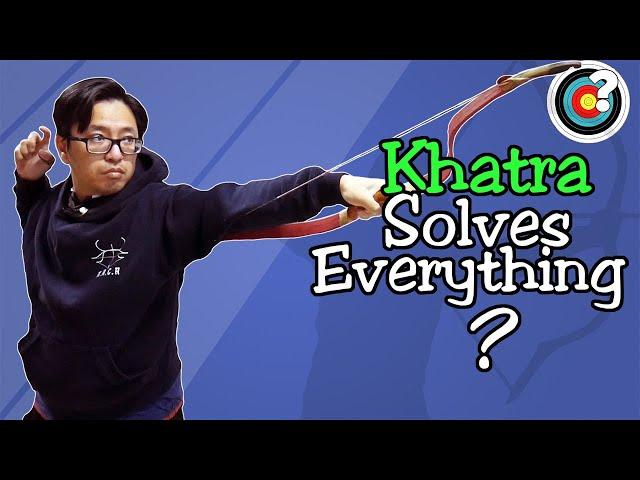
Does Khatra IGNORE Arrow Spine? | Asiatic Archery
Комментарии:

Too slow and long winded as usual, unsubscribed. ❌
Ответить
NU sensei gone mystical this time. Nicely done torba
Ответить
it can be pretty consistent if you dont overdoit. you really dont need that amount of motion for kathra to be effective. clearence is achived in the first few inches of the movement. anything beyond that is unnecesary movement more appropriate for movies than real life situations.
Ответить
Thanks a lot, very well explained and demonstrated 😀
Ответить
I've started thumb draw and khatra this summer, and already shoot it better than the western style (talking about instinctive shooting of course, can't compare to sights). I get annoyed when people talk about "timing it right". If you apply some torque on the bow before letting go of the string, then upon release the khatra will be performed, perfectly timed. No manual timing involved. Your hand/arm acts as a spring, and releases the khatra automatically. Whether the arrow hits the bow or not depends on a lot of parameters, such as the shape of the bow and amount of torque applied, but I can fairly easy make it so that the spine doesn't contact the bow, and it's easy to hear the difference.
Ответить
I using 38# Turkish laminated bow
Arrow setup :
- spine 300
- 28"
- GPP 10
- 26.xx grams
- FOC 10-11%
- Carbon Express Predator II
Added khatra, the arrow flew very good
More stiffer and shorter at 28", in my empirical experience makes the arrow more better to maintains the condition of the shaft when receiving kinetic energy from the bow
The key is khatra to use the arrow setup above, give more benefit to reduce deflection and arrow slap
Thats why i never too strict using spine measurement based om AMO, as long as doesnt use weak spine let say >650 or >700, i have no worry to use more stiff spine

Haha Goa ying would totally make fun of you for shooting 40lb bows …. But Im not sure if Chinese spoken there was mandarin or Cantonese?? You did Cantonese accent
Ответить
Good to see, that you are back, bless you, hope you doing well.
Ответить
NUSensai, i recently got a Turkish bow, but i'm having difficulties with finding an arrow pass for it.
do you have any recommendations? (the bow came without grip or arrow pass)

I shoot Asiatic (horse) bows and I use thumb draw/release, as a right handed shooter I have experimented with khatra and have found that a slight flick of the left wrist to the left, keeping the arm straight, to be sufficient for arrows to fly straight, however I have noticed that left handed shooters don't need to do khatra for arrows to fly straight.
Ответить
That's funny a video about khatra when I am so deep inside asiatic archery now.. My 2 000 euros bow hasn't been touched since I started a year ago..
Ответить
Thanks dude!
Ответить
Well said Nu. Glad to see someone describe this technique for what it is. I agree, khatra sounds like an exotic magical technique but it is merely torqueing the bow. It is lateral tension, a potential source of inconsistency, especially when the archer is under pressure or gets excited. I regard it as a necessary evil to achieve generally better arrow flight with certain types of equipment. There is nothing better than well tuned equipment loosed with inline form.
Ответить
This is an excellent video, it explains why there are so many videos and so many people that say that khatra is useless; one cannot simply try it once and see world changing results. It took me months to see any benefit and it is a difficult skill to master.
Ответить
I'll give my opinion based on my experience: khatra, when you get the technique down, makes the bow shoot more like a centreshot bow because it keeps the force exerted on the arrow nock by the string closer to top dead centre throughout the power stroke. The fact that khatra also "moves the bow out of the way" during the powerstroke also means the arrow has less "archer's paradox" to overcome. The combined effect is that you are able to shoot a wider range of arrow spines accurately and without potential safefty concerns, but even with khatra, there will still be such thing as an overspined arrow, and definitely still such thing as an underspined arrow.
Ответить
Thank you for everything you do for us.
Ответить
I practice traditional Korean archery and we hold the bow a little different in that the bow arm tendons are primed to flick the bow on release. I don't muscle the bow flick, it just happens due to the shape of the hand that forms the grip. I suppose that is a form of khatra? I can shoot this way better than I can a bow with a shelf but I have less time on the latter.
Ответить
Basically change the error in your ways, not the ways that you error in.
Ответить
Totally agree, I use khatra with a hankyu and to make it even harder ended up with too stiff arrows This forces me to get really good and consistent at the khatra or be completely frustrated with results. Slow improvements but very interesting process.
Ответить
Great video! Really like how you compare modern times with the historical application of the usage, well thought out and clear explanation. Good content here
Ответить
Nice bow how much price & full detail
Ответить
Happy that you are back making educational and fun content. I just recalculated the correct arrow spine for me and my bow. Maybe a video on that could be helpful. The lookup tables from the arrow mfgs don't include arrow pass that makes a big difference for more traditional bows.
Ответить
Your are making great work on this Chanel, you are covering techniques, fun facts and almost everithing in archery so every one can learn from your videos. I am watching your Chanel for about 3 years and it let me to decision to enter an archery club. I am very thankfull.
Ответить
I use khatra but have to match the arrow spine as well... but khatra drains out stamina very quickly ... and often use at short range
Ответить
Video request: Slavic draw and variables to get ideal arrow flight and impact.
Ответить
Excellent explanation and properly historically contextualized
Ответить
great explanation
Ответить
This was an excellent video explaining something I've been curious about for a while
Ответить
You should take a look at Bucellarius' videos on Byzantine archery, I think I speak for some others too when I saw we would love to hear your thoughts on it!
Ответить
You should practice with a low weight bow like 30. You don’t need to do the whole bow forward movement at the end of your shot as the arrow is gone before you have to move the stave like that. A low powered bow will really hone your bow skills.
Ответить
Khatra works if your wrist goes faster than 150+ fps. And now for some real heresy: the best way to mitigate spine issues is to use a crossbow.
Ответить
"This video up here" is not showing a video any more..? Also: welcome back.
Ответить
Can u make video how to aim with horsebow please...
Ответить
Man. What an excellent explanation
Ответить
I am sure all the experts, who dont actually shoot Asiatic bows or have only ever shot one bow will have various "expert" comments. Here is my take, I shoot thumb draw and basically agree with what you are saying, personally, I dont think of khatra or emphasize it, have seen the technique over emphasised in some peoples shooting, I guess I do a form of it, that works for me, and can see it, when I video my shooting, I have experimented with empathizing it more, the downwards for example, with my very short Turkish bow, tbh with my bows and arrows, didn't help, but sideways, for me, does improve a little bit, but think many other aspects more important, does take practice, and people shouldnt over think it.
Ответить
Khatra is the Todd Howard of archery
Ответить
as I see in the slow motion: you turn the bow-using khatra too late. you turn the bow AFTER the arrow had passed the bow. there can`t be no effekt on the arrow flight

"The closer the spine matches, the less it matters." This is hands-down the best video I've seen on Khatra. You display the advantages and disadvantages of Khatra, why and when it was first invented, and the difference between those times and modern day archery.
Years ago I taught archery classes and conducted/judged multi-state archery competitions. Have shot just about every kind of bow and style I could find. This is the first video that I've seen that presents Khatra in a balanced and realistic manner.
The one thing that wasn't mentioned is that of simple physics: when one twists the bow (or allows it to twist) in any direction, it changes the orientation of the string to the arrow, causing the direction of the string thrust to change. This is the primary flaw of Khatra. Now admittedly that happens in any style of archery, but is much more pronounced in Khatra, where the archer goes from having the string shoot relatively in line with the arrow to being greatly out of line with the arrow. Instead of a standard string-angle change of an inch or so, Khatra changes the angle of string-to-arrow by considerable amounts.
As with any type of archery, that can be compensated for-- and that is indeed covered in the video. You mention that Khatra is learned over time, can be difficult to learn to shoot consistently (as is the case with any form of archery), and it makes the archer the adjustment tool. So yes, archers can learn to shoot using Khatra. If one if just absolutely determined to shoot any spine and size of arrow from 200 to 800 randomly, Khatra may be somewhat of a solution-- but in my mind not a great one. We no longer live in an age where random-spine arrows are necessary... and Khatra does not compensate for varied arrow weights. Thus a matched-arrow set makes sense, whether shooting wood, aluminum or carbon arrows. And if the arrow's spine is correct that eliminates the ancient reason for Khatra.
I have seen both Mediterranean and thumb shooters hold the bow in one position, not altering it at all... and shoot very accurately when using correctly spined arrows. That's what correct arrow spine is for. And in this day and age of precision-made arrows, there is no need to do otherwise. Today we can easily access a nicely-balanced carbon, aluminum or even a wood-based arrow set with similar or identical spine, weight and length. Even if the arrow set isn't spined perfectly to the bow, it is easier to simply compensate for the altered flight than to learn a whole new shooting style. At least the flight will be relatively consistent within that arrow set.
I have shot Khatra in multiple styles. I have never found it to be as accurate as Mediterranean / Olympic style archery, nor as accurate as stable-bow thumb release. In truth, when I watch videos featuring Khatra I note that the arrows are regularly all over the target rather than being in a tight cluster. If I want to shoot all over the target I'll just haul back and shoot any arrow with any bow in any style I want... and the arrows will land all over the target. But if I want to hit consistently... Khatra is not what I'd choose as a preference. This video makes it clear that Khatra is not essential to modern archery equipment, and I have to agree.
So I appreciate very much how this video presents Khatra as a method of shooting... but is not a magic cure-all, nor even the "best way to shoot" that some instructors present it to be. I'm pretty sure if Khatra was the best and most accurate method of shooting, Olympic contenders would be using thumb rings and Khatra rather than the three-finger, stable Mediterranean style that we see used in professional tournaments.
If someone has developed Khatra and loves shooting Khatra, then that's fine for them. But Khatra is not a cure-all; it's just a style of archery. This video makes that clear in a sensible and well-presented manner, without denouncing the Khatra style completely. It shows both the pros and cons of the style, as it should. Excellent work.

i like how this channel has less olympic archery now
Ответить
Looks like you are forcing the khatra. Pushing the bow forward with your wrist after the arrow has left it. Moving the bow forward and out of the way shouldn't be an intentional action... that motion draws the eye when you see people shooting with khatra, so you assume the motion is important but it actually has nothing to do with the technique. It's just the natural movement of your arm falling away once the tension of the bow has been released. By the time the bow drops the khatra is already over. It looks to me like either you are trying to "push" the arrow forward with your arm, or possibly you have an urge to keep the bow rock steady while the arrow is leaving it, only willing to move after the arrow is gone (a natural desire for archers trained in Olympic recurve or compound, but it ruins khatra).
The critical issue here you need to understand is that khatra is not the technique of moving the bow out of the way. Khatra is the whole process from setting the arrow on the string to watching it leave the bow.
It might help you overcome this if you focused on not slowing yourself at full draw. Whenever you are reaching full draw in this video you slow down and hesitate before releasing. Western training causes you to want to stop and aim at full draw, and they also warn you not to "snatch" at the release - but with thumb release you WANT that quick, snappy motion. You aren't quite stopping but still the instinct is obviously there, and your release is too much like "letting go" rather than "plucking a guitar string". From the beginning to end your draw and release should be one quick, fluid motion. Yes, this makes it harder to aim. Please stop trying to aim. You won't have time. Learn the technique right and your brain will aim for you. The "10 steps to the 10 ring" methodology taught you in Western archery is crippling you, pausing and considering each action step by step is anathema to khatra.
Once you are shooting like this, then you will discover that all you need do is apply gentle pressure with your thumb and pinky during your draw and release; this is the moment where you are doing khatra. Afterwards the bow will fall away of its own accord. The critical issue here you need to understand is that khatra is NOT the technique of moving the bow out of the way while shooting . Khatra is a method for drawing and firing the bow - it is the whole process from starting to draw the string until watching it leave the bow.
To put it very gently... perhaps the reason you have years of videos criticizing khatra is because you have never experienced doing it correctly? Of course it would seem bad to you in this case... I realize you have backed off of some of those positions when experts corrected you, which is good, but maybe reconsider creating educational content around it in the first place until you've mastered the technique?

Great explanation, thx.
Ответить
Probably the best video about khatra and its purpose I have ever seen!
Ответить
First, in the slow motion, you turned the bow too late, probably because your reaction is not faster than the arrow. Second, even if you are faster enough, what's the point of doing this in archery? You mitigate spine, but you also eliminate all other benefits by using a bow, such as accuracy, consistency, and so on. You made archery being like shooting a basketball or slinger... If you want to shoot others' arrows back in war, tong-ah archery may work.
Ответить
That Helps
Thank You

If you're shooting an Asiatic, bow thumb release and even with heavier spine or properly spine arrows you're always getting arrows that have the nock to the right once they're in the target, but everything else seems to be fairly smooth and consistent..is khatra the way to fix this if it's not simply a spine problem or is it something wrong with the release itself?
Ответить
This is so useful. Especially when you decide to go all the way by wood arrows. The various spine on that particular arrows were very vast. Thank You
Ответить
